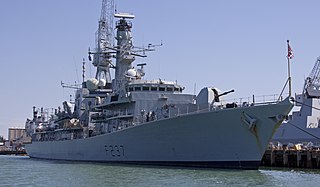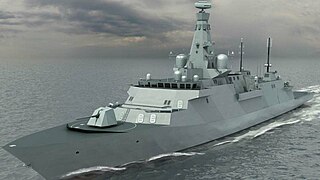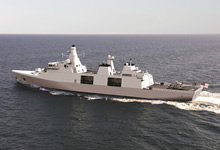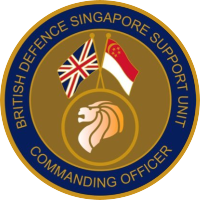
An aircraft carrier is a warship that serves as a seagoing airbase, equipped with a full-length flight deck and facilities for carrying, arming, deploying, and recovering aircraft. Typically, it is the capital ship of a fleet, as it allows a naval force to project air power worldwide without depending on local bases for staging aircraft operations. Carriers have evolved since their inception in the early twentieth century from wooden vessels used to deploy balloons to nuclear-powered warships that carry numerous fighters, strike aircraft, helicopters, and other types of aircraft. While heavier aircraft such as fixed-wing gunships and bombers have been launched from aircraft carriers, these aircraft have not landed on a carrier. By its diplomatic and tactical power, its mobility, its autonomy and the variety of its means, the aircraft carrier is often the centerpiece of modern combat fleets. Tactically or even strategically, it replaced the battleship in the role of flagship of a fleet. One of its great advantages is that, by sailing in international waters, it does not interfere with any territorial sovereignty and thus obviates the need for overflight authorizations from third-party countries, reduces the times and transit distances of aircraft and therefore significantly increase the time of availability on the combat zone.

A carrier battle group (CVBG) is a naval fleet consisting of an aircraft carrier capital ship and its large number of escorts, together defining the group. The CV in CVBG is the United States Navy hull classification code for an aircraft carrier.

The Type 23 frigate or Duke class is a class of frigates built for the United Kingdom's Royal Navy. The ships are named after British Dukes, thus leading to the class being commonly known as the Duke class. The first Type 23, HMS Norfolk, was commissioned in 1989, and the sixteenth, HMS St Albans was commissioned in June 2002. They form the core of the Royal Navy's destroyer and frigate fleet and serve alongside the Type 45 destroyers. They were designed for anti-submarine warfare, but have been used for a range of uses. Eleven Type 23 frigates remain in service with the Royal Navy, with three vessels having been sold to the Chilean Navy, and one being retired in 2021, and a second one being retired in 2023.

The Type 45 destroyer, also known as the D or Daring class, is a class of six guided-missile destroyers built for the United Kingdom's Royal Navy in the early 21st century. The class is primarily designed for anti-aircraft and anti-missile warfare and is built around the PAAMS air-defence system using the SAMPSON Active electronically scanned array (AESA) and the S1850M long-range radars. The first three destroyers were assembled by BAE Systems Surface Fleet Solutions from partially prefabricated "blocks" built at different shipyards; the remaining three were built by BAE Systems Maritime – Naval Ships. The first ship in the Daring class, HMS Daring, was launched on 1 February 2006 and commissioned on 23 July 2009.

HMS Monmouth was the sixth "Duke"-class Type 23 frigate of the Royal Navy. She was the seventh ship to bear the name and was launched by Lady Eaton in 1991, being commissioned two years later.

HMS Westminster is a Type 23 frigate of the Royal Navy, and the second ship to bear the name. She was launched on 4 February 1992 and named for the Dukedom of Westminster.

HMS Queen Elizabeth is the lead ship of the Queen Elizabeth class of aircraft carriers and the Fleet Flagship of the Royal Navy. Capable of carrying 60 aircraft including fixed wing, rotary wing and autonomous vehicles, she is named in honour of the first HMS Queen Elizabeth, a World War I era super-dreadnought, which in turn was named after Queen Elizabeth I. The carrier Queen Elizabeth carries her namesake ship's honours, as well as her Tudor rose-adorned crest and motto.

Future planning of the Royal Navy's capabilities is set through periodic Defence Reviews carried out by the British Government. The Royal Navy's role in the 2020s, and beyond, is outlined in the 2021 defence white paper, which was published on 22 March 2021. The white paper is one component of the Integrated Review of Security, Defence, Development and Foreign Policy, titled as Global Britain in a Competitive Age which was published on 16 March 2021.

The Type 26 frigate or City-class frigate is a class of frigate being built for the United Kingdom's Royal Navy, with variants also being built for the Australian and Canadian navies. The programme, known as the Global Combat Ship, was launched by the UK Ministry of Defence to partially replace the navy's thirteen Type 23 frigates, and for export. Its primary role is to conduct advanced anti-submarine warfare missions while supporting air defence and general purpose operations. The type is the first naval platform shared between Australia, Canada and the United Kingdom since the Tribal-class destroyer.
The National Security Strategy and Strategic Defence and Security Review 2015 was published by the British government during the second Cameron ministry on 23 November 2015 to outline the United Kingdom's defence strategy up to 2025. It identified key threats to the UK and the capabilities it required to address them.

The Type 31 frigate or Inspiration class, and formerly known as the Type 31e frigate or General Purpose Frigate (GPF), is a planned class of frigate intended to enter service with the United Kingdom's Royal Navy in the 2020s alongside the submarine-hunting Type 26 frigate. Designed by Babcock International, it is also marketed under the name Arrowhead 140 and is based on Odense Maritime Technology’s (OMT) Iver Huitfeldt-class frigate hull.
A Littoral Response Group (LRG) is a Royal Navy task group consisting of at least two amphibious warfare ships, a company of Royal Marines and supporting elements primarily tasked with amphibious warfare from the littoral areas. They were first deployed in 2020 and have been described by the Royal Navy as being more flexible and agile compared to previous amphibious task groups with an emphasis on forward-basing, precision strike capabilities, high mobility, modern command and control technology, networked autonomous systems and deception capabilities. Multiple LRGs can combine to form a more substantial Littoral Strike Group (LSG) and they can also join a UK Carrier Strike Group to form an Expeditionary Strike Force.

The British Defence Singapore Support Unit (BDSSU) is a British naval facility located in Sembawang, Singapore. A remnant of a larger naval base, known as HMNB Singapore, the facility provides fuel and other supplies to Royal Navy ships in the region, as well as those of other countries. It is the only permanent Royal Navy presence to remain at the former naval base, which is maintained by Naval Party 1022 under the auspices of the Five Power Defence Arrangements (FPDA).

The UK Carrier Strike Group (UKCSG) is a carrier battle group of the Royal Navy. It has existed in various forms since the mid-2000s. Between 2006 and 2011, the formation centred around the Royal Navy's Invincible-class aircraft carriers until the retirement of their Harrier GR9 strike aircraft in 2011 as a result of the Strategic Defence and Security Review. The UKCSG subsequently returned in February 2015 ahead of the entry into service of the new Queen Elizabeth-class aircraft carriers, HMS Queen Elizabeth and HMS Prince of Wales. The aim of the CSG is to facilitate carrier-enabled power projection.
HMS Active is a planned Type 31 frigate and the thirteenth vessel of the Royal Navy to carry the name. In May 2021, the names of the five planned Type 31 ships were announced by the First Sea Lord. The names were selected to represent key themes that represent the future plans of the Royal Navy and Royal Marines - forward deployment of ships overseas; operating in the North Atlantic; carrier operations; technology and innovation; and the Future Commando Force.
HMS Bulldog is a Type 31 frigate of the Royal Navy and the eighth vessel named Bulldog. The name was selected to represent key themes that represent the future plans of the Royal Navy and Royal Marines.
HMS Venturer is the lead ship of the Type 31 frigate-class currently under construction for the Royal Navy and the seventh vessel named HMS Venturer.
HMS Campbeltown is a Type 31 frigate of the Royal Navy and the third vessel named after Campbeltown, a town in Argyll and Bute in Scotland. In May 2021, the names of the five planned Type 31 ships were announced by the First Sea Lord. The names were selected to represent key themes that represent the future plans of the Royal Navy and Royal Marines, with Campbeltown after first ship to bear the name, which was pivotal in the St Nazaire raid, a major commando attack on the occupied port of St Nazaire and the destruction of its dry dock in 1942. The plan for the Type 31 project envisages all five units of the class being in service by February 2030.











